Wet blocking your crochet pieces
Wet blocking is one of the three blocking methods (see related articles). It’s the most thorough method and also yields the best results in my opinion. It can be safely used with any type of yarn. Just make sure you don’t agitate the yarn when you roll it between the towels.
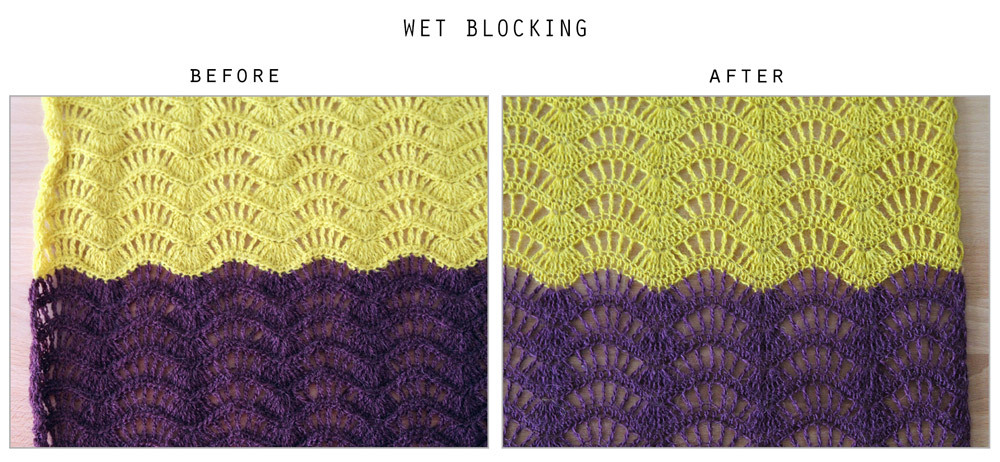
Related articles
Materials needed
Necessary:
 | Blocking mats. The sturdy mats will help you pin down your work. (available on Wool Warehouse (UK) or Amazon). |
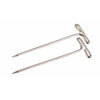 | T-pins. I prefer T-pins over regular pins. They’re sturdier and easier to place. Whatever you choose, make sure they’re made out of stainless steel (available on Jimmy Beans Wool (US) or Wool Warehouse (UK) ). |
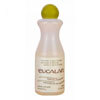 | Eucalan, a leave-in yarn detergent. Technically not necessary, but I heavily recommend using it (available on Wool Warehouse (UK) and Jimmy Beans Wool (US) ). |
You will also need a bucket and a few old towels.
Nice to have:
 | Blocking wires. These will help you block larger items such as shawls and blankets. (available Wool Warehouse (UK) or Jimmy Beans Wool (US)). |
 | Rainbow Blockers. These will speed up your blocking process by placing multiple pins at one go (available at Wool Warehouse (UK) or Jimmy Beans Wool (US)). |
Wet blocking tutorial
Step 1: Soaking
Soak your item for 15-30 minutes in a basin filled with cold or lukewarm water, so the water can penetrate the fibres thoroughly. If you prefer, you can add a bit of Eucalan at this stage. Eucalan is a product containing Lanoline, a natural part of fibres that is usually stripped away during the production of yarn. Lanoline brings back a bit of softness to your yarn. Plus it smells really, REALLY good. The cold water soak helps to get rid of any excess dye, and thus helps to prevent colour bleeding. You don’t have to rinse Eucalan out.
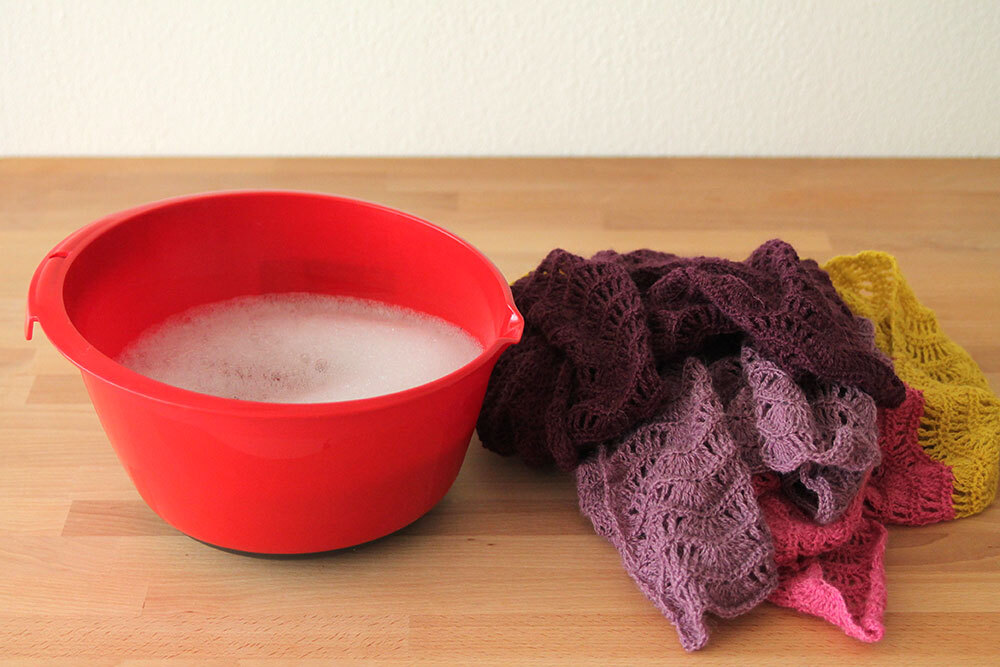
Step 2: Pressing
Take your item from the cold water bath. I drain the water at this point, gently pressing my item against the edges of the tub or basin to get rid of some excess water. Once it's not soaking wet anymore, place your item between two old towels.
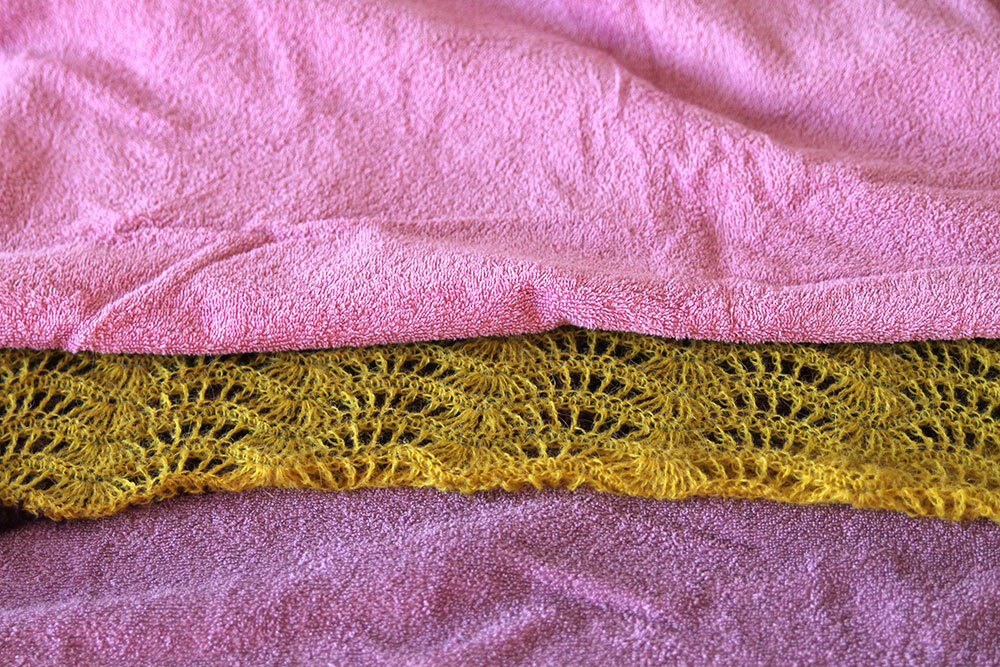
Step 3: Rolling
Now gently roll the item as if it was a sushi roll. No wringing or hard pressing, just gently squeeze out any excess water. You just want to take your item from soaking wet to moist. The weight of the towels will already press out most of the water.
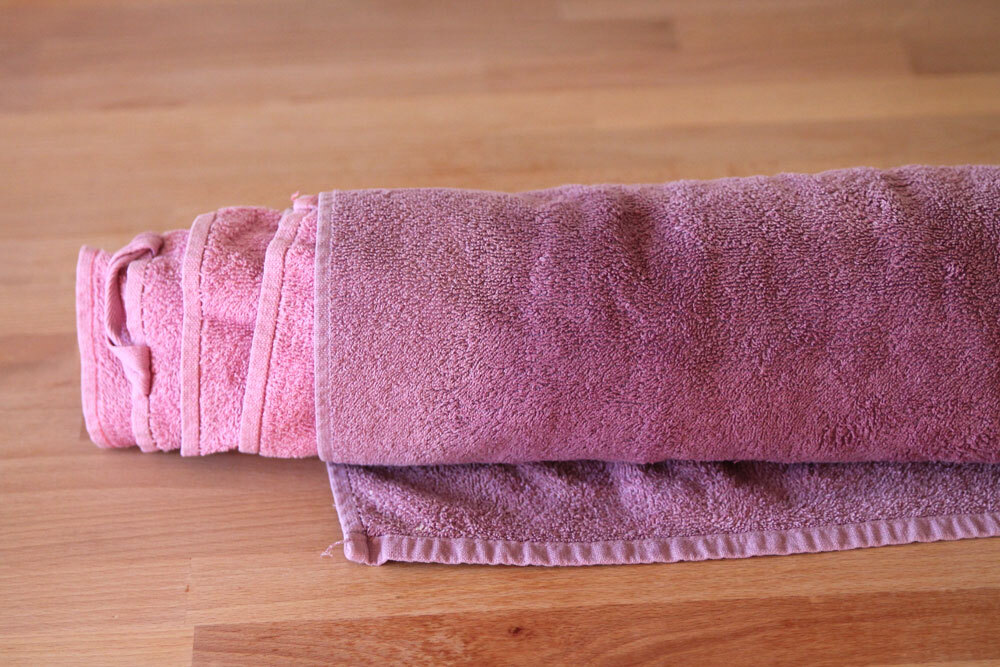
Step 4: Pinning
Take out your blocking board and pins. Pin your item flat and into shape on the blocking board, paying extra attention to any feature stitches such as picots and shells. It’s ok if you stretch your work a little: you will notice if you overstretch it because your piece will then form ‘peaks’ where you’ve put your needles.
Don’t be afraid to use too many pins. There’s no such thing as ‘too many pins’ when it comes to blocking. Blocking sets such as in the table above can help you block bigger sections quicker.
If you’re blocking a piece that is made in the round or has a double layer of fabric, such as a sweater, or a hat, make sure that it’s flat down the seams, so there won’t be creases forming in the front- or back panel.
If you are blocking large pieces often, you might want to invest in blocking wires. These are long, flexible wires that help cover larger area’s. You can put them into place by adding a couple of pins just behind the wire. I’ve used blocking wires for the large side on this shawl, but you can get the same results with T-pins.
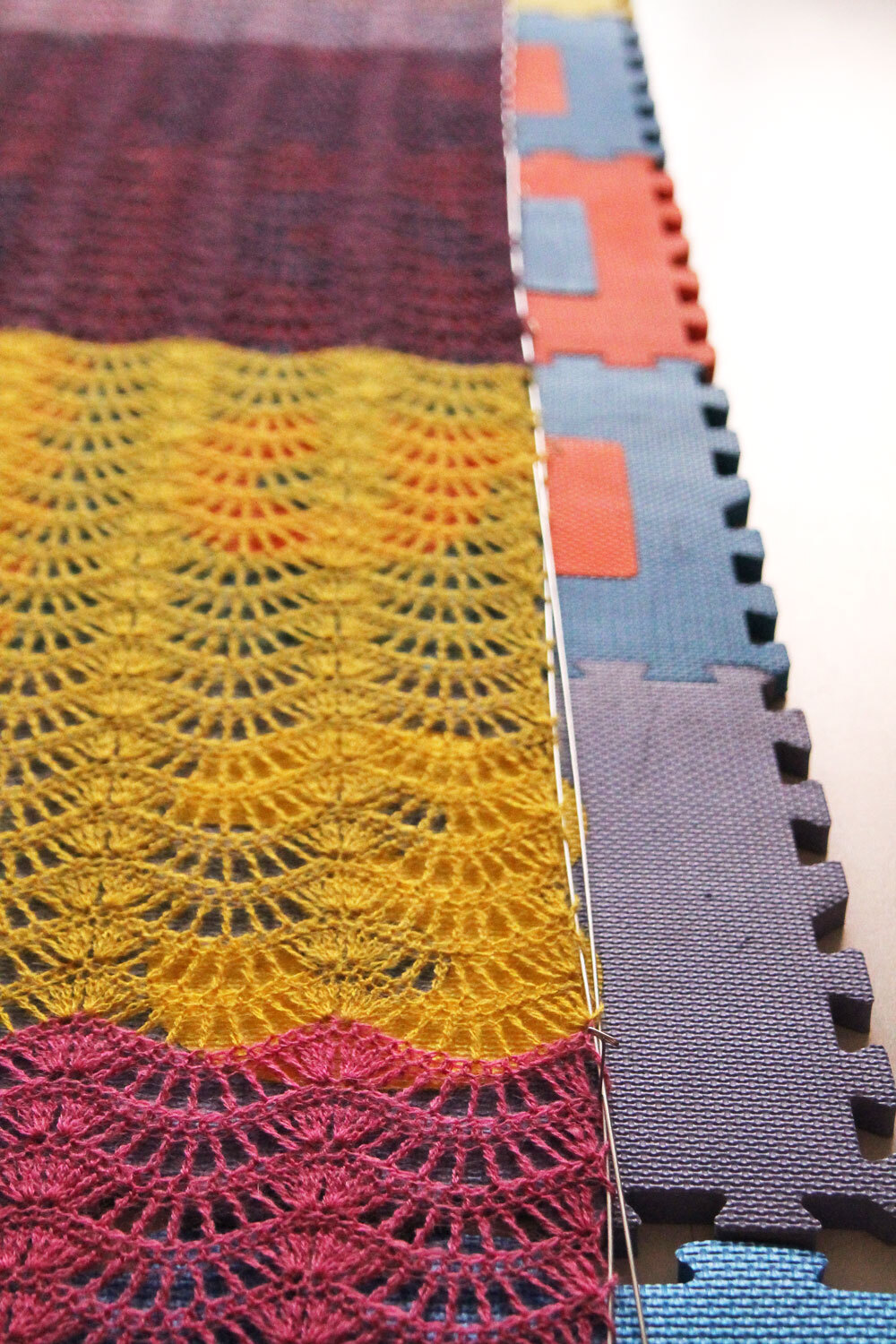
Step 5: Drying
Leave your item to dry overnight. Don’t unpin it until it’s completely dry. Gently unpin it and take your piece from the board. You’ll see and feel the huge difference blocking makes! This is the end result:
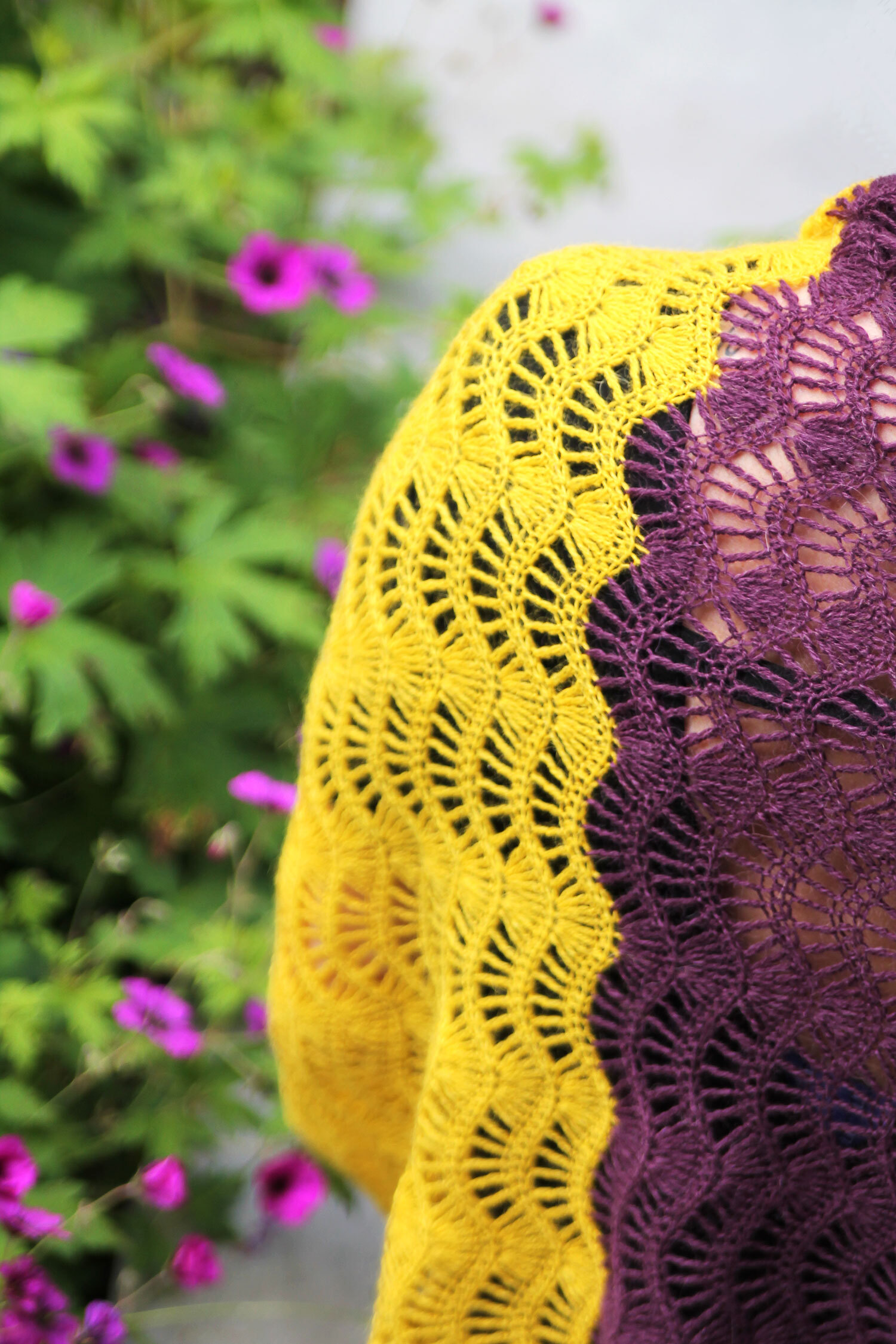
(The pattern is the Feather and Fan shawl).




Comments
you can block your border in sections! If you are proficient in steam blocking, you can just steam block your way around the border (make sure that each section is cooled off before you move on to the next in order to prevent creasing when you shift to the next part). Soak and spray blocking are always an option. There's no need to start over again though, in my opinion! April 04, 2022 14:46 - Reply
I’m wondering if you can block jute. Is there anything special about working with this fiber? December 13, 2022 12:47 - Reply